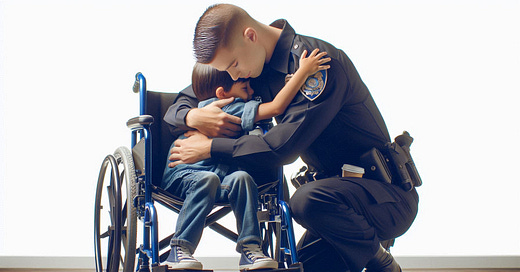AI Integration in School Systems and Police Communication Centers: Enhancing Safety for Children with Special Needs
Utilizing Artificial Intelligence for Intelligence and Safety During Active Shooter Incidents, Lockdowns, and Lockouts
Introduction
In an era where technology increasingly permeates every aspect of our lives, the integration of Artificial Intelligence (AI) within school systems and police communication centers presents a promising avenue for enhancing safety, particularly for children with special needs. This paper explores how AI can provide invaluable intelligence, ensuring that first responders are equipped with the necessary information during active shooter incidents, lockdowns, lockouts, and drills.
The Role of AI in Modern Education and Safety
AI has revolutionized various sectors, and education is no exception. From personalized learning experiences to administrative efficiency, AI's potential in schools is vast. However, its application in safety protocols, especially for children with special needs, is an area that warrants significant attention.
AI in School Systems
Within schools, AI can be employed to gather and analyze data related to children with special needs. This includes information on their specific disabilities, medical requirements, communication preferences, and behavioral triggers. Such data can be crucial during emergencies, providing a comprehensive profile that aids in the swift and effective handling of situations.
AI in Police Communication Centers
Police communication centers equipped with AI can process and relay critical information more efficiently. By interfacing with school systems, AI can ensure that real-time data on children with special needs is available to first responders. This integration allows for a coordinated approach, minimizing response times and maximizing the effectiveness of interventions.
Enhancing Active Shooter Drills, Lockdowns, and Lockouts
Active shooter drills, lockdowns, and lockouts are essential for preparing students and staff for potential threats. AI can enhance these drills or situations by providing tailored scenarios that account for the specific needs of children with disabilities. This ensures that all students are adequately prepared and that their safety is prioritized[1].
Real-Time Incident Management
In the event of an actual active shooter incident, lockdown, or lockout, AI systems can provide first responders with real-time updates on the location and status of children with special needs. This includes information on their likely hiding places, their medical needs, and any special communication requirements. Such intelligence is invaluable in ensuring that no child is left behind during rescue operations.
Challenges and Ethical Considerations
While the benefits of AI integration are apparent, it is crucial to address the associated challenges and ethical considerations. Data privacy is a significant concern, as the sensitive information of children with special needs must be protected. Additionally, there is the challenge of ensuring that AI systems are accurate and free from bias[2].
Data Privacy and Security
Schools and police departments must implement robust data privacy and security measures to protect the information of children with special needs. This includes encryption, access controls, and regular audits to ensure that data is not misused or compromised.
Accuracy and Bias in AI Systems
AI systems are only as good as the data they are trained on. It is essential to ensure that these systems are trained on diverse and representative datasets to avoid biases that could impact their effectiveness. Continuous monitoring and updating of AI algorithms are necessary to maintain their accuracy and reliability.
Conclusion
The integration of AI within school systems and police communication centers holds promise for enhancing the safety of children with special needs during active shooter incidents, lockdowns, lockouts, and drills. By providing real-time intelligence and ensuring a coordinated response, AI can help first responders act swiftly and effectively, ensuring that no child is left behind. However, it is imperative to address the associated challenges and ethical considerations to fully harness the potential of AI in this critical area.
Future Directions
Looking ahead, further research and pilot programs are needed to refine AI systems and their integration within educational and police frameworks. Collaboration between technology developers, educators, and police agencies will be key in developing solutions that are both effective and ethically sound. With careful implementation, AI can play a pivotal role in safeguarding the most vulnerable members of our school communities.
[1] National Academies (2024) Active Shooter Drills: Considerations for Students with Disabilities, A Listening Session Series. Retrieved from https://www.nationalacademies.org/event/43961_10-2024_active-shooter-drills-considerations-for-students-with-disabilities-a-listening-session-series
[2] Lukens, P. (2024) Chief Philip Lukens: What does the future hold for AI in policing and justice? Retrieved from https://policing.tv/videos/philip-lukens-chief-of-police-alliance-nebraska-balancing-surveillance-and-privacy-concerns/




